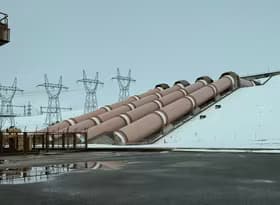
Can labour force participation keep rising?
The labour force participation rate has been consistently rising over the past 30 years in New Zealand, providing a welcome boost to the labour supply. The participation rate rose from 64% in 1994 to 72% in 2024, accounting for 41% of the growth in the labour force. With an aging population – and workforce – further rises in participation would help fill labour force shortfalls. But can participation keep rising?
Rising labour force participation has boosted the labour force
There have been two key components of the rise in labour force participation, which has boosted the labour force – higher participation of women in the labour force, and higher participation of older people. Chart 1 shows the relative significance of these two factors, in terms of the number of people in the labour force. Rising participation of females 15-64 years of age has contributed an additional 300,000 people to the labour force between 1994 and 2024. Rising participation of people aged 65 years and older has contributed 168,000 additional people.
Growth in the 15-64-year-old population contributed an additional 761,000 people to the labour force, assuming participation rates stayed constant. However, 15-64-year-old population growth is projected to slow to 504,700 over the next 30 years, suggesting slower labour force growth overall, if we can’t achieve further increases in participation.
Higher female participation
Participation of 15-64-year-old women has risen from 64% in 1994 to 79% in 2024, reflecting a falling fertility rate and more women returning to work after having children. Accordingly, the gap between male and female labour force participation closed from 19 percentage points (ppts) in 1994 to seven ppts in 2024.
Chart 2 shows that childbearing still has an effect on female labour force participation, with the male-female participation rate gap in 2024 ranging from 5ppts in the 20–24-year-old age group, to 10ppts across the 25-44 year old age group, before closing back to 5ppts in the 45-49 year old age group.
The fact that the male-female participation gap is highest in prime childbearing ages suggests that a significant proportion of women are still taking time out of the labour force to have children. However, that the gap closes again from age 45 shows that most women taking time out to have children are returning to the labour force afterwards. Without further change in the role of women in raising children in our society, it seems unlikely that this gap could substantially close further.
The gap between male and female participation starts to open up again from age 50 onwards, which could be a generational or cohort effect, with this cohort having lower participation even in their younger years. If it is a cohort effect, it means that we wouldn’t necessarily expect younger females today will have such a difference in participation when they reach age 50.
Higher 65+ participation…
The labour force participation rate for those aged 65 years and older (male and female) has risen from 5.9% in 1994 to 26% in 2024. Advances in life expectancy (and health expectancy) have meant that an increasing share of the population are healthy and keen to work beyond the traditional retirement age of 65. Working at older ages has further been encouraged by shifts in in the eligibility of NZ Super and removal of compulsory retirement ages, both of which took place in the 1990s.
However, Chart 3 shows that participation still drops significantly from 84% in the 50-54-year-old age group, with just 45% of 65-69-year-olds in the labour force, and just 14% of 75-79-year-olds.
It’s interesting to note that the sharpest drop in participation occurs between the 60-64-year-old and 65-69-year-old age groups. This drop away suggests that the 65-year age of eligibility for NZ Superannuation still has a significant effect on when people choose to retire – either meaning that they can afford to retire, or signalling a socially appropriate age of retirement.
…But the 65+ age group is getting older
Even within the 65-years-and-older age group, the population is getting older. In 2024, people aged 65-74 made up 56% of the 65-years-and-older age group. However, by 2038, the 75-years-and-older population will make up the majority of the 65-years-and-older age group. Even as labour force participation continues rising within the 65-years-and-older age group, the aging of this group will limit its contribution to future labour force growth, given the relatively low participation rate, especially beyond 70 years of age.
Projecting participation
Clearly, there are a lot of moving parts driving participation – economic and social. We’ve projected the effect of aging on participation using three approaches to provide an indicative range. The three approaches consider:
- If trends for participation in each age group continue. For example, the participation rate for females aged 65-69 rose 3.5 percentage points between 2013 and 2023, so we assume that growth in participation continues at the same rate into the future.
- If trends in participation for each cohort continue. For example, participation of 65-69-year-olds rose by 2.1 percentage points between 2013 and 2013, so we assume that participation in the 70-74-year-old age group will rise by the same amount in future.
- If participation stays at 2023 levels, and only the population and number of people within each age bracket changes.
Across all of these approaches, we’ve assumed that participation under the age of 45 will remain at 2023 levels. There has been relatively little change in participation under the age of 45 in recent years, and retirement starts to have an effect above age 45.
65+ participation is near its maximum…
Growth in participation in the 65-years-and-older age group has started to flatten off over the past five years, reaching 25% in 2024. Chart 4 shows that across the three projection approaches, participation would reach a maximum of 27% by 2028, and could be as low as 23% by 2043. Participation in the 65-years-and-older group is near its maximum, as the growing size of the ”old-old” (75+) age group counteracts the rise in participation in the ”young-old” (65-74) age group.
…overall participation is probably near its maximum too
With practically flat participation projected for our fastest growing age group (65+), overall participation (ages 15+) is likely near its maximum too. Overall participation has sat at a peak of 72% for the past two years, but all three scenarios show a decrease to 71% in 2028, 70% in 2033, and as low as 68% in 2043.
Participation does vary in response to economic conditions – with more people joining the labour force when labour is most in demand. This sort of response mechanism could encourage more people to participate when the labour market tightens in response to the aging population. However, it would take particularly strong growth in 15-64-year-old participation to fully counteract the flat to declining participation projected for the fast-growing 65-years-and-older age group.
Time to turn to productivity, or higher migration
Although there is some uncertainty around exactly where participation will head, it is clear that the strong participation rises of the past 30 years can’t be sustained into the future as our population further ages. With flat participation and slowing population growth, we will either need to improve our productivity or increase migration if we want to maintain the economic momentum that we have become accustomed to. This challenge is particularly acute for regions with rapidly aging populations, as they will face a reduction in economic activity if productivity doesn’t improve.
Sustaining migration beyond our long-term forecast level of 30,000 per year will become increasingly challenging as the world’s population growth slows. Although productivity improvements are often placed in the ‘too hard’ basket, they may be a more realistic option than increasing migration. With a slowing global population, developed and aging countries like New Zealand will increasingly be competing for a small pool of migrants. Strong migration into New Zealand will also face political resistance, particularly if it is rapid and not accompanied by timely investment in infrastructure.




















